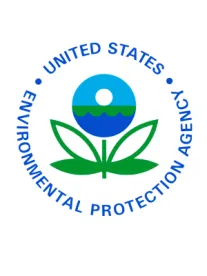Environmental justice remains a top concern for the Biden Administration. The United States Environmental Protection Agency (U.S. EPA) recently highlighted in its 2022-2026 Strategic Plan (Strategic Plan) that it intends to enhance use of the Civil Rights Act of 1964 to “embed environmental justice and civil rights in the Agency’s core work” and to “strengthen civil rights enforcement in communities overburdened by pollution.”
Collectively, Title VI of the Civil Rights Act and U.S. EPA’s existing regulations generally prohibit discriminatory effects due to programs receiving federal financial assistance. Under that authority, it has long been the case that one may file a complaint with U.S. EPA’s Office of Civil Rights (ECRCO) against a state permitting agency that receives federal funding if they believe an issued permit has a discriminatory effect. If ECRCO agrees with the complaint following an investigation, the federal funding could be terminated. To date, ECRCO has issued only one finding of discrimination (in 2017 regarding the 1995 permitting of a Michigan power plant), and that did not result in a loss of financial assistance.
A 2020 report by U.S. EPA’s Office of Inspector General recommends seven changes to improve ECRCO’s program and lead to better Title VI compliance by federally funded permitting agencies. Many of those recommendations appear to be consistent with objectives of the newly announced Strategic Plan.
The Strategic Plan’s commitment to environmental justice is a continuation of prior announcements by the Administration. As we previously blogged about, environmental justice was a priority of President Biden’s infrastructure proposal. As the infrastructure proposal is winnowed in Capitol Hill negotiations, U.S. EPA’s Strategic Plan embeds environmental justice into every facet of the agency’s work.
The strategic plan identifies seven goals for the agency, with Goal 2 devoted to “Take Decisive Action to Advance Environmental Justice and Civil Rights.” Within that goal, U.S. EPA’s Strategic Plan identifies three objectives:
-
“Promote Environmental Justice and Civil Rights at the Federal, State, Tribal, and Local Levels.” This objective involves building capacity and climate resilience to overburdened and underserved communities, engaging governments to achieve results at a local level, and integrating environmental justice principles into federal programs in native lands.
-
“Embed Environmental Justice and Civil Rights into EPA’s Programs, Policies, and Activities.” This objective involves elevating the civil rights to equal status with environmental laws within EPA’s mission: “EPA must ensure the Agency is following and implementing the Civil Rights Act just as equally as environmental statutes.” To achieve this goal, the Strategic Plan calls for measurable environmental improvements in overburdened and underserved communities, incorporating community involvement in decision making, and considering civil rights in developing and implementing programs.
-
“Strengthen Civil Rights Enforcement in Communities with Environmental Justice Concerns.” This objective involves using U.S. EPA’s authority to “vigorously enforce federal civil rights laws,” including prohibiting discrimination in EPA programs. The Strategic Plan calls for more outreach and information sessions to overburdened and underserved communities, expanding the number of audits of recipients of EPA financial assistance to ensure compliance with nondiscrimination requirements, and developing new long-term performance goals on informal resolution agreements under Title VI of the Civil Rights Act.
Outside of these objectives, a commitment to environmental justice is woven throughout the Strategic Plan. This includes:
-
By 2026, U.S. EPA seeks to conduct 55 percent of its annual inspections “at facilities that affect communities with potential environmental justice concerns,” an increase from an average of 27 percent in 2017-2019.
-
Environmental justice concerns will be integrated into the regulatory process, including development of “new and enhanced applications of environmental justice analytics to inform how power sector rules can mitigate impacts on overburdened communities.”
-
U.S. EPA will consider environmental justice when assessing policy and regulatory development pertaining to water pollution.
-
U.S. EPA will involve “communities with environmental justice concerns” in its efforts to remediate contaminated sites and return them to productive reuse.
Though it remains to be seen how U.S. EPA will implement these environmental justice goals, its commitment demonstrates the Biden Administration’s focus on environmental justice issues. Beyond public statements, a focus on environmental justice could play out across regulatory priorities and enforcement actions. For example, Congressional Research Service recently reported that the Administration is considering updating Executive Order 12898 issued by President Clinton and/or the CEQ’s regulations to increase efforts to address environmental justice under the National Environmental Policy Act (NEPA).




 />i
/>i

